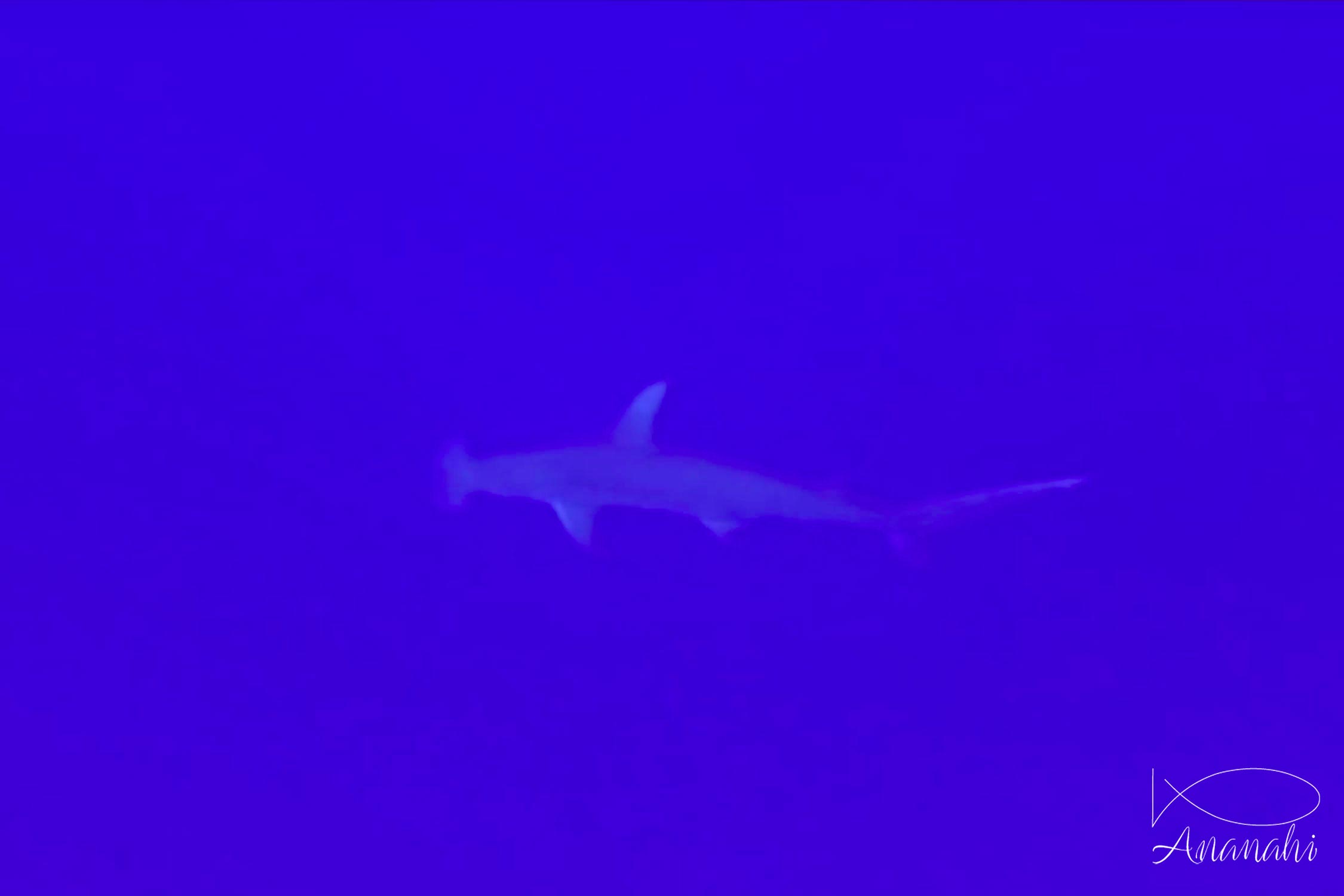
Scientific name: Sphyrna mokarran
Size: Between 11,5 and 20 feet
Color: Light gray or gray-brown on the dorsal side and white on the flanks
Distinguishing feature: Hammer-shaped head, larger size than other hammerhead sharks and highly developed dorsal fin (can reach more than a meter).
Where did we see it: French polynesia

Scientific name: Sphyrna mokarran
Size: Between 11,5 and 20 feet
Color: Light gray or gray-brown on the dorsal side and white on the flanks
Distinguishing feature: Hammer-shaped head, larger size than other hammerhead sharks and highly developed dorsal fin (can reach more than a meter).
Where did we see it: French polynesia
This shark is rather solitary, he can live up to 37 years.
It's a hunter who feeds mainly on rays and sharks, the leopard ray being his favorite dish. It is also immune to the venom of rays.
The hammerheads' head allow them better lift and take sharper turns than other sharks. It's a very sensitive shark that can, thanks to its sensory cells (Lorenzini ampoules), detect electric fields at 5 μV / c. It repeats you at more than 0,31 miles ;).
A female alone has given birth to a baby in a zoo, this is the first observation of a parthenogenesis shark.
Mammals have a horizontal tail.
Fishes have a vertical fin.
Some sharks can stay motionless on the sand (white tips reef sharks, nurse sharks, etc.).
These sharks don't have to swim to bring oxygen to their gills like other sharks (grey, hammerheads tc.)
Turtles are in economy mode when they are sleeping. If they are woken during night, they may not have enough air to return to surface.
So, please be careful during night dives!